2/12/21
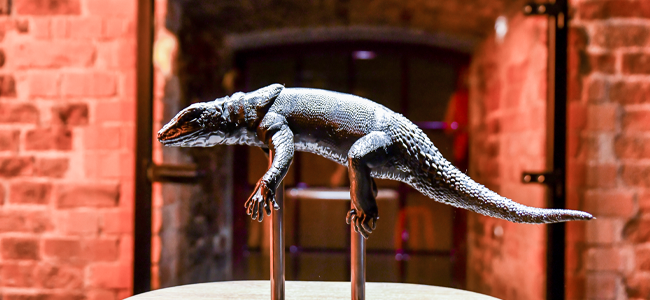
Summary
In one of the articles published on our blog back in July, we informed you about an exhibition which was being prepared on the occasion of reopening the Museum of Amber in the Grand Mill in Gdańsk, Poland. We also introduced the profile of Jakub Pastuszak – the artist responsible for creating some of the installations for that exhibition and an industrial designer working in Gdańsk.
On July 24, 2021, the exhibition opened up to the public with a collection of art, jewelry, and utensils made of amber – one of the most prominent symbols of the Polish coastal region. But the Museum also decided to promote accessibility of art to people suffering from any kind of vision loss with a few very interesting 3D printed art pieces. Jakub was responsible for delivering those pieces for this project.
Back in September 2020, Jakub received a commission to recreate amber-related art from the 17th and 18th centuries for the said exhibition. The commissioned showpieces included:
For the next ten months, Jakub led the project with the help from the Museum’s employees and other designers. One of the methods the team applied to produce the installations was 3D printing with the full spectrum of Zortrax devices. The task required thorough preparation: “I put together a team of people who are great at “sculptural” modeling, which was the key requirement for the project of that nature. We planned the whole concept based on 10 GB of source data provided by the Museum – films, visualizations, prints, and photos showing the pieces with the exhibition’s main motive.” – says Jakub.
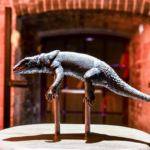
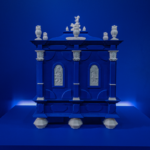
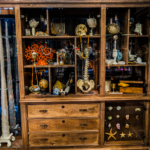
Once the modeling stage of the project was complete, the designer produced and post-processed the majority of elements for each installation in his studio which is equipped with Zortrax devices working in LPD Plus, UV LCD, and SVS technologies. Because some of the 3D printed items were meant to withstand interactions with people, Jakub also performed prototyping and testing of prints before the final production phase.
The whole project had specified requirements for each showpiece in terms of size, the number of prints to be produced, and the materials to be used. However, two installations needed a little more attention since they are meant to aid people who are blind or vision-impaired experience shapes and textures. Jakub points out that: “The first design task when creating the Amber Cabinet and the model of a lizard was a thorough analysis of the original exhibits. We wanted to use modern production methods to create shapes closest to the original, as well as influence the visual and tactile sensations.”
The original Cabinet dated back to 1724 had a construction made out of pine wood. It also was embellished with small features hand-carved in amber, ivory, silver, and mica crystals. With that in mind, Jakub had to carefully choose the manufacturing technology to be able to prepare the entire object. First, the main construction was done through CNC milling of medium-density fiberboards (MDF), and then varnished to ultramarine.
Yet, a bit more challenging part of the work was to reproduce the highly precise embellishments. For that purpose, Jakub chose 3D printing with Zortrax Inkspire because of its capability to print parts with great dimensional accuracy. Here, 3D prints made in the UV LCD technology faithfully reflect the nature of ornaments fabricated manually with great care.
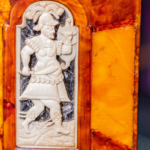
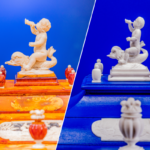
Thanks to the applied Resin Tough White, the designer achieved a striking color contrast between ultramarine and white, which is particularly significant in this case as it can be spotted by people with daltonism. Additionally, the resin’s high durability helped to create elements that can withstand constant touching by people with other vision impairments. Being able to reproduce those minute details with 3D printing allowed Jakub to make the piece faster and with lower costs than using very expensive services of professional miniaturists.
The task of 3D modeling the lizard was even more difficult, as Jakub only had a few photos of the original inclusion at his disposal. Despite the small size of the inclusion (only 6 cm [2.36 in]) and some defects of the reptile, e.g. a missing tail, Jakub’s team succeeded in 3D modeling both the animal’s position and skin so that the 3D print could help the vision impaired people imagine what the lizard looks like just by touching. The model was divided into 6 parts.
Initially, Jakub used Z-ULTRAT Plus to prototype some parts of the model and test their resistance to breakage under normal use. The results were unsatisfactory: “The parts were susceptible to fracture and I worried that the ready model would quickly become damaged by people visiting the Museum on a regular basis.” – Jakub remarks.
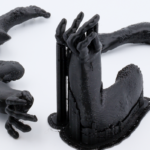
On the other hand, redesigning the 3D project to make its walls thicker wasn’t the right option, as it would influence the aesthetics of the print’s surface which had to resemble the lizard’s skin texture. While searching for a different solution, Jakub tested Z-FLEX filament and it turned out that the printed models showed sufficient durability and were warm when touched. And these were the exact requirements for this particular exhibit.
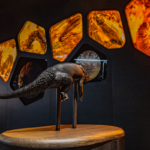
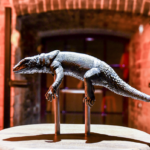
Using Z-FLEX allowed Jakub to create a 3D printed object which people can touch and have the feeling as if they’re interacting with a living organism. The lizard’s body and tail were 3D printed on Zortrax M300 Plus, whereas the limbs were prepared on Zortrax Inventure. After that, all 6 parts were glued together using an acrylic adhesive.
Jakub strongly believes that 3D printing has changed our reality in many aspects. The experience he gained while delivering such complex 3D models for the Museum of Amber made him see that the possibilities of additive manufacturing technologies can set new directions: “What previously took a lot of time and money to be fabricated manually can now be 3D printed and maintain high quality on par with traditional manufacturing methods.” – Jakub explains.
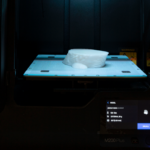
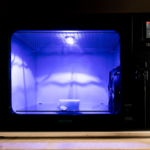
Yet, the project of creating 3D printed art for people who have problems with their vision proves that we can make tangible objects with real educational value. What’s more, if any of the exhibits becomes worn due to everyday use, it can easily be replaced with a new 3D printed copy of the same, repeatable quality.
You can read more about the devices used in this project on their product pages: M300 Plus, Zortrax Inkspire, and Zortrax Apoller.